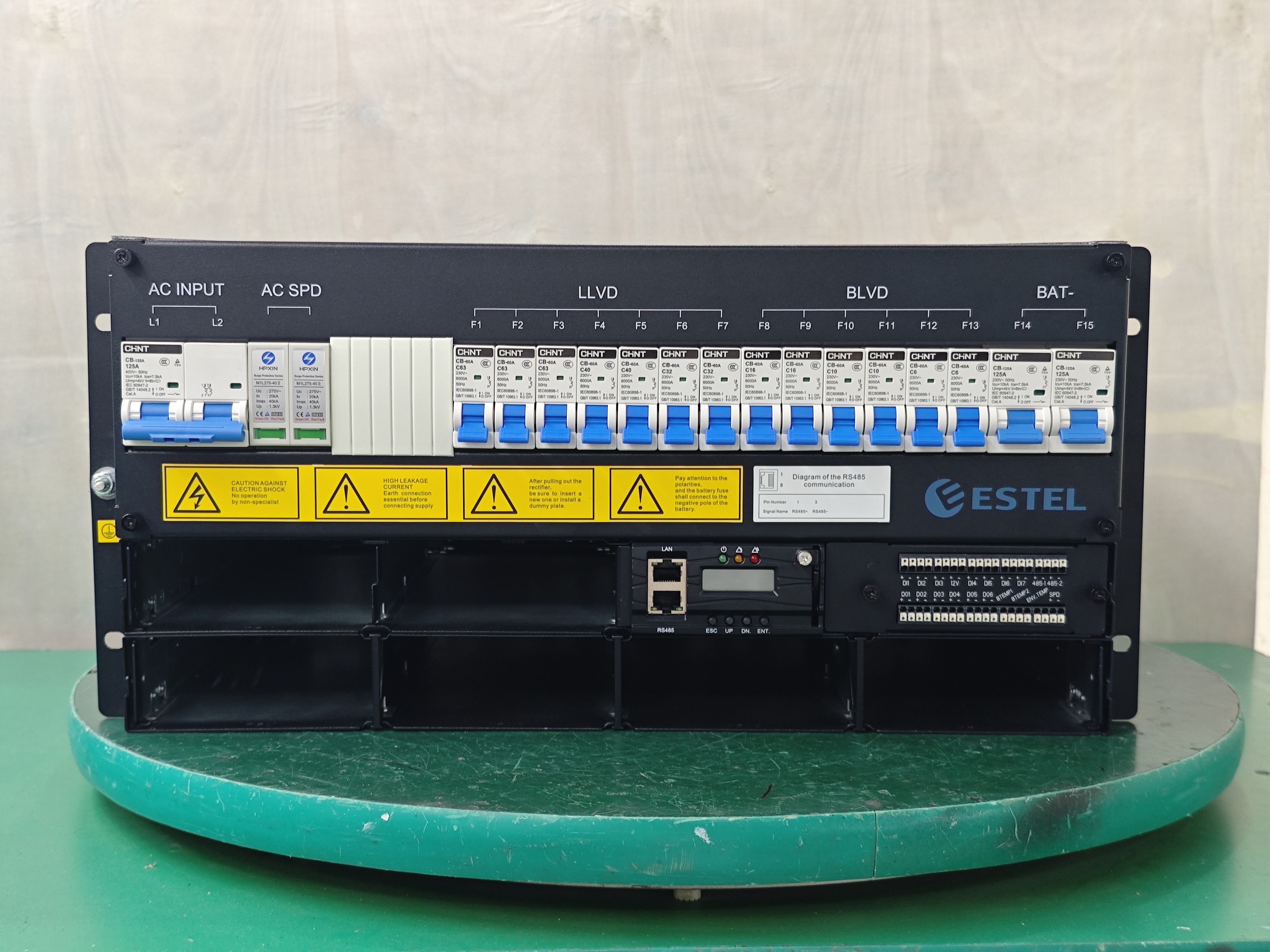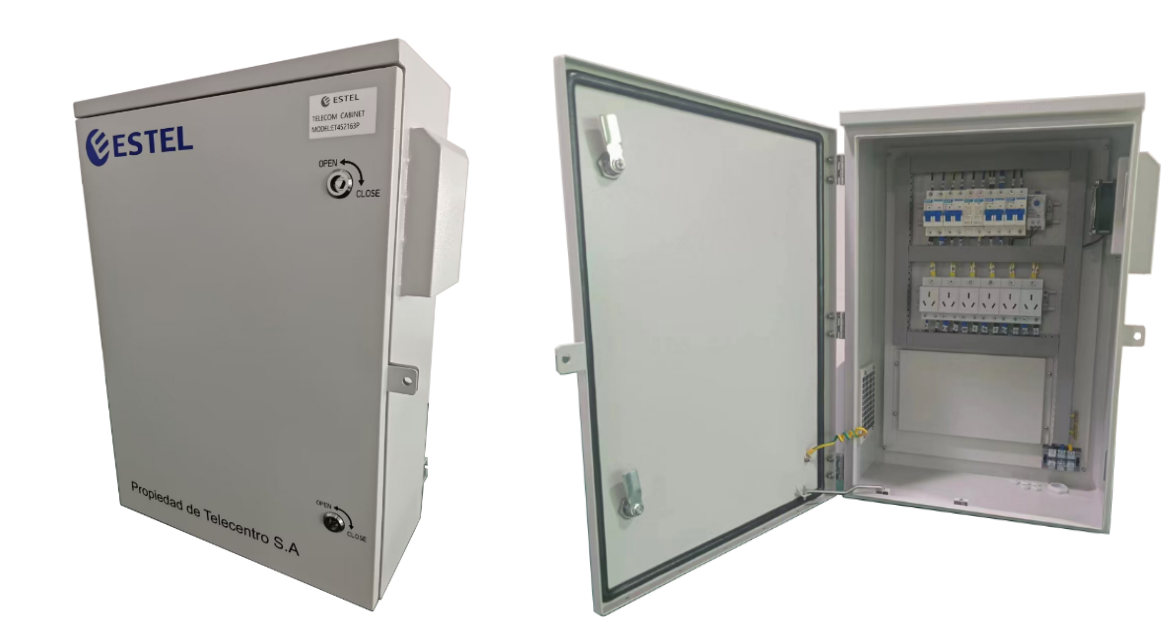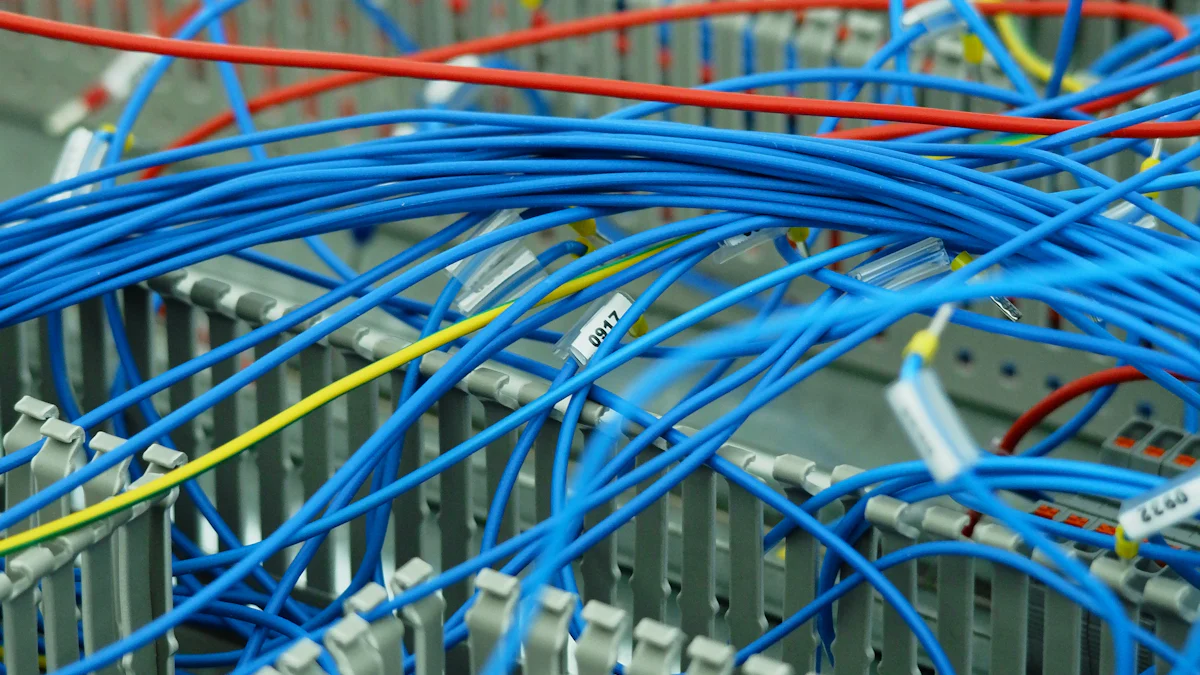Understanding International Standards for Communication Power Supplies

Communication power supplies form the backbone of modern systems, ensuring seamless operation across industries. Their reliability directly impacts the performance of communication networks, making their design and functionality critical. Adhering to international standards guarantees safety and compliance with global requirements. These standards also address 不同国家对于通信电源的电流电压要求, enabling manufacturers to meet diverse regional needs. However, navigating these regulations presents challenges, especially when balancing technical specifications with market demands. A robust power supply must align with these requirements to ensure efficiency and reliability in communication systems.
Key Takeaways
International rules make communication power supplies safe and reliable. They protect people from dangers like shocks and fires.
Following rules like UL and IEC improves product quality and lowers risks from electromagnetic problems.
Companies can sell in more places by following global rules. This makes trade easier and helps customers trust the products.
Using RoHS-approved materials shows care for the environment and follows green laws.
Updating designs to meet new rules keeps companies competitive and avoids big fines.
What Are Communication Power Supplies?

Definition and Purpose
A communication power supply is a specialized unit designed to provide consistent and reliable energy to telecommunication systems. It ensures that critical infrastructure, such as data centers and base stations, operates without interruption. These systems often require a high-performance power supply to meet the demanding requirements of modern communication networks. By adhering to established standards, manufacturers can ensure that these units meet global safety and performance specifications.
The primary purpose of a communication power supply is to maintain the seamless operation of communication systems. It achieves this by delivering stable voltage and current, which are essential for the proper functioning of sensitive electronic equipment. Additionally, it protects against power fluctuations, which can damage components or disrupt services.
Key Components and Functions
A communication power supply unit consists of several key components, each serving a specific function:
Rectifiers: Convert alternating current (AC) to direct current (DC) for use in electronic devices.
Batteries: Provide backup power during outages, ensuring uninterrupted operation.
Voltage Regulators: Maintain a stable output voltage, even when input conditions fluctuate.
Cooling Systems: Prevent overheating by dissipating excess heat generated during operation.
These components work together to meet the stringent power supply specifications required by telecommunication systems. For instance, deep-cycle batteries act as reliable backup sources during power disruptions. They ensure that critical infrastructure remains operational, minimizing downtime and maintaining vital communication channels.
Importance in Communication Systems
Communication systems rely heavily on power supply units to function efficiently. A stable and reliable power supply is crucial for maintaining the integrity of data transmission and network connectivity. Without it, telecommunication systems risk experiencing service interruptions, which can lead to significant operational and financial losses.
Meeting power supply specifications is particularly important in outdoor installations, where environmental factors can pose additional challenges. For example, the Outdoor Telecom Cabinet by Tianjin Estel Electronic Science and Technology Co., Ltd incorporates advanced cooling systems and robust construction to ensure optimal performance in harsh conditions. Such designs highlight the importance of aligning with international standards to deliver reliable solutions.
By adhering to these requirements, manufacturers can ensure that their products meet the demands of modern communication systems while maintaining safety and efficiency.
Overview of Key International Standards

UL (Underwriters Laboratories)
Safety and Performance Requirements
UL standards play a pivotal role in ensuring the safety and performance of communication power supplies. UL 62368-1, the primary standard in the United States and Canada, governs audio/visual and IT equipment. It adopts Hazard-Based Safety Engineering (HBSE) principles to identify and mitigate potential hazards. This approach focuses on protecting users by addressing risks such as electrical shock, fire, and overheating. The standard also emphasizes compliance with detailed safety requirements for internal transformers and over-temperature devices.
UL standards require power supplies to meet stringent specifications, ensuring they operate safely under various conditions. For example, enhanced grounding protection reduces the risk of electrical shock, while fire prevention measures safeguard against dropped conductive materials. These requirements highlight the importance of designing power supplies that prioritize user safety and reliability.
Certification Process
The UL certification process involves rigorous testing to verify compliance with safety requirements. Manufacturers must submit their products for evaluation, where experts assess their adherence to UL 62368-1 and other relevant standards. The process includes testing for electrical, thermal, and mechanical safety, as well as verifying proper labeling and markings. Once certified, products receive the UL mark, signifying their compliance with recognized safety standards.
IEC (International Electrotechnical Commission)
Global Standardization for Electrical Equipment
The IEC develops international standards that promote consistency and safety in electrical equipment. IEC 62368-1:2023, a globally recognized standard, replaces older standards like IEC 60950-1. It introduces a hazard-based approach to safety, ensuring power supplies meet modern requirements. This standard addresses access-controlled environments, preventing unauthorized access and enhancing consumer protection.
Specific Standards for Power Supplies (e.g., IEC 60950, IEC 62368-1)
IEC 62368-1 includes detailed requirements for safe power supplies, particularly SELV (Safety Extra Low Voltage) types. It emphasizes fire prevention, grounding protection, and the safe use of materials and chemicals. Compared to IEC 60950, the new standard provides more comprehensive safety specifications, reflecting advancements in technology and user needs.
RoHS (Restriction of Hazardous Substances)
Environmental Compliance
RoHS focuses on environmental standards by restricting the use of hazardous substances in electronic equipment. It ensures manufacturers avoid materials like lead, mercury, and cadmium, which pose risks to human health and the environment. Compliance with RoHS demonstrates a commitment to sustainability and aligns with global environmental goals.
Impact on Material Selection
RoHS compliance influences material selection during the design and manufacturing process. Manufacturers must choose components that meet environmental standards while maintaining performance and reliability. This approach not only supports sustainability but also ensures products meet international specifications for safety and efficiency.
Standard | Focus Area | Region of Application |
|---|---|---|
UL 62368-1 | Safety for audio/visual and IT equipment | United States and Canada |
IEC 62368-1:2023 | Hazard-based safety engineering | Global |
FCC | Electromagnetic interference (EMI) | United States |
EN 55032 | EMI emissions for electronic devices | European Union and UK |
RoHS | Restriction of hazardous substances | European Union and others |
Compliance with Regional Standards
Low Voltage Directive (LVD) and EMC Directive
The Low Voltage Directive (LVD) ensures the safety of electrical equipment operating within specific voltage ranges. It applies to devices with input or output voltages between 50V and 1000V for alternating current (AC) and 75V to 1500V for direct current (DC). Manufacturers must meet these requirements to guarantee user safety and product reliability. The directive emphasizes proper insulation, grounding, and protection against electrical hazards.
The Electromagnetic Compatibility (EMC) Directive addresses the ability of equipment to function without causing or being affected by electromagnetic interference. This regulation ensures that communication power supplies operate efficiently in environments with multiple electronic devices. Compliance with EMC standards involves testing for emissions and immunity to interference. Adhering to these directives allows manufacturers to sell their products in the European Union, ensuring market access and consumer trust.
不同国家对于通信电源的电流电压要求
不同国家对于通信电源的电流电压要求 vary significantly, reflecting diverse regional needs and infrastructure. For instance, North America typically uses 120V/60Hz for AC power, while Europe relies on 230V/50Hz. These differences require manufacturers to design power supplies that accommodate varying voltage and frequency standards.
In Asia, countries like Japan and China have unique electrical systems. Japan uses both 100V/50Hz and 100V/60Hz, depending on the region, while China follows the 220V/50Hz standard. Manufacturers must consider these variations to ensure compliance with local regulations.
Meeting 不同国家对于通信电源的电流电压要求 involves designing adaptable power supplies. Features like universal input voltage ranges and automatic frequency adjustment enhance compatibility. By aligning with regional regulations, manufacturers can expand their market reach and deliver reliable solutions tailored to specific needs.
Adapting to regional standards and regulations ensures that communication power supplies meet global expectations while addressing local requirements. This approach enhances product reliability and fosters consumer confidence.
Practical Implications of International Standards
Impact on Design and Engineering
Material and Component Selection
International standards significantly influence material and component selection in power supply design. Manufacturers must prioritize materials that meet safety and environmental requirements, such as RoHS compliance, which restricts hazardous substances. Selecting components that align with energy conservation standards ensures efficiency and reduces environmental impact. Unified standards, like the CE mark, simplify trade by ensuring products meet stringent specifications for safety and electromagnetic compatibility (EMC).
Key considerations include:
Input power requirements for operation.
Heat dissipation to prevent inefficiency.
No-load power draw to minimize energy waste.
Design for Safety and Efficiency
Designing communication power supplies involves balancing safety and efficiency. Standards like IEC 62368-1 emphasize hazard-based safety engineering, ensuring products operate reliably under various conditions. Engineers must address electromagnetic interference (EMI) and compatibility (EMC) to meet global certification requirements.
Category | Description |
|---|---|
Safety standards | Regulations ensuring the safe operation of power supplies. |
EMI/EMC standards | Standards that address electromagnetic interference and compatibility. |
Efficiency standards | Guidelines that dictate the acceptable levels of power conversion efficiency. |
By adhering to these standards, manufacturers enhance product reliability and meet global market demands.
Manufacturing and Production Considerations
Quality Control and Testing
Quality control ensures compliance with international standards during production. Manufacturers implement rigorous testing procedures, including environmental stress screening and real-world condition simulations. These tests verify adherence to safety and efficiency specifications.
Quality Control Measure | Description |
|---|---|
UL Ratings | Compliance with UL standards ensures safety and performance for power supplies. |
IEC 62368-1:2023 | A safety standard for communication technology equipment, emphasizing hazard-based safety. |
FCC Compliance | Ensures devices do not cause electromagnetic interference, critical for legal market entry. |
EN 55032 | Regulates electromagnetic interference emissions in the EU, ensuring devices do not disrupt others. |
RoHS Compliance | Restricts hazardous materials in manufacturing, essential for market access in the EU and UK. |
Certification and Documentation
Certification requirements demand thorough documentation. Essential documents include CB reports, CB certificates of compliance, and UL certifications. These records demonstrate adherence to safety and performance standards, ensuring smooth market entry. Testing facilities provide detailed reports that validate compliance with international specifications.
Compliance Challenges and Solutions
Navigating Regional Variations
Regional variations in power requirements pose challenges for manufacturers. For example, North America uses 120V/60Hz, while Europe relies on 230V/50Hz. Designing adaptable power supplies with universal input voltage ranges ensures compatibility across regions.
Partnering with Certification Bodies
Collaborating with certification bodies simplifies compliance. Organizations like Phihong demonstrate how extensive certifications (UL, CE, FCC, RoHS) facilitate market entry and ensure product reliability. These partnerships help manufacturers navigate complex regulations and reduce compliance risks.
Meeting international standards enhances product safety, efficiency, and market competitiveness. Manufacturers must integrate these requirements into every stage of design and production to succeed globally.
Benefits of Adhering to International Standards
Enhanced Safety and Reliability
Adhering to international standards ensures that communication power supplies meet stringent safety requirements. These standards limit electromagnetic interference, reducing risks in communication systems. Compliance with certifications like the CE mark guarantees construction quality and safeguards consumers from hazards such as electrical shocks and fires. Regulatory bodies enforce these standards to protect users and enhance product reliability.
Benefit | Description |
|---|---|
Consumer Protection | Safeguards consumers from hazards such as electrical shocks and fires. |
Legal Compliance | Ensures adherence to mandatory regulations, avoiding legal consequences like fines or recalls. |
Market Access | Facilitates entry into various markets by meeting specific standards, expanding customer base. |
Reputation Management | Demonstrates commitment to quality and safety, protecting the company's reputation. |
By meeting these specifications, manufacturers not only protect users but also build trust in their products, ensuring long-term reliability.
Improved Market Access and Competitiveness
Compliance with international standards opens doors to global markets. The establishment of unified regulatory frameworks, such as those in the European Union, simplifies trade and ensures consistent product quality. The CE mark, for instance, has become a benchmark for power supplies, promoting compliance across multiple regions.
Unified standards simplify trade within the European Union and beyond.
The CE mark ensures products meet essential safety and performance requirements.
Countries adopting similar regulations enhance global competitiveness for compliant manufacturers.
Manufacturers that meet these requirements gain access to specific markets, expanding their customer base and increasing revenue opportunities. Compliance also strengthens brand reputation, positioning companies as reliable and competitive players in the industry.
Long-Term Cost Savings and Risk Mitigation
Adhering to international standards minimizes risks associated with product recalls, legal penalties, and reputational damage. Manufacturers that prioritize compliance during the design and production phases reduce the likelihood of costly errors. For instance, selecting materials that meet environmental and safety specifications ensures durability and efficiency, lowering maintenance costs over time.
Standardized testing and certification processes further mitigate risks by verifying product quality before market entry. This proactive approach not only saves costs but also enhances operational efficiency. By aligning with global standards, manufacturers can focus on innovation and growth without the burden of regulatory setbacks.
Meeting international standards delivers measurable benefits, from enhanced safety to improved market access and cost savings. These advantages underscore the importance of integrating compliance into every stage of product development.
International standards play a vital role in ensuring the safety, reliability, and market readiness of communication power supplies. These standards provide clear specifications that enhance product performance and reduce risks associated with electromagnetic interference. For manufacturers, compliance is not just a legal requirement but also a pathway to accessing global markets and building consumer trust.
Key takeaways include:
Compliance improves the efficiency of power supplies, reducing power loss through advanced techniques like soft switching.
Adhering to EMC requirements minimizes interference, ensuring reliable operation.
Meeting regulatory standards safeguards companies from legal penalties and product recalls.
To stay compliant, manufacturers should take proactive steps:
Maintain certifications like ISO9001 to demonstrate quality management.
Align with environmental standards such as RoHS to showcase sustainability.
Regularly update designs to meet evolving safety and efficiency regulations like IEC 62368-1:2023.
By consulting experts, using certified components, and staying informed about regulatory changes, manufacturers can ensure their products meet international standards and remain competitive in the global market.
FAQ
What are the key international standards for communication power supplies?
International standards like IEC 62368-1 and UL 62368-1 ensure safety and performance in power supplies. These standards address hazard-based safety engineering, electromagnetic compatibility, and environmental compliance. Adhering to these guidelines guarantees reliable operation and global market access.
How do manufacturers ensure compliance with regional voltage and current requirements?
Manufacturers design power supplies with universal input voltage ranges and automatic frequency adjustments. This approach accommodates regional variations, such as 120V/60Hz in North America and 230V/50Hz in Europe. Compliance testing verifies adherence to local regulations.
Why is RoHS compliance important for power supply manufacturing?
RoHS compliance restricts hazardous substances like lead and mercury in power supplies. This ensures environmental safety and aligns with global sustainability goals. Manufacturers selecting RoHS-compliant materials demonstrate their commitment to eco-friendly practices and regulatory adherence.
What role does certification play in power supply production?
Certification validates that power supplies meet international standards for safety and performance. Documents like UL certifications and CB reports confirm compliance. These certifications enhance consumer trust and simplify market entry for manufacturers.
How do cooling systems improve the reliability of power supplies?
Cooling systems, such as fan ventilation and air conditioning, prevent overheating in power supplies. This ensures stable operation under varying conditions, especially in outdoor installations. Effective cooling extends the lifespan of components and maintains efficiency.
See Also
Essential Insights Into Telecom Power Supply Characteristics
An Introductory Guide to Telecom Power Supply Basics
Ensuring Correct Voltage in Communication Cabinets with ESTEL
Exploring Outdoor Communication Cabinets and Their Telecom Importance
Designing a Communication Room Compliant with Industry Standards
CALL US DIRECTLY
86-13752765943
3A-8, SHUIWAN 1979 SQUARE (PHASE II), NO.111, TAIZI ROAD,SHUIWAN COMMUNITY, ZHAOSHANG STREET, NANSHAN DISTRICT, SHENZHEN, GUANGDONG, CHINA

